5 Tips on How to Draw a Blueprint by Hand
How do you draw a blueprint by hand quickly and efficiently? Here at RoomSketcher, we get this question all the time. Fortunately, we work with thousands of professionals who create hand-drawn blueprints every single day, all over the world. We asked them for their top tips on how to create an accurate blueprint using just pen, paper, and a laser measurer.
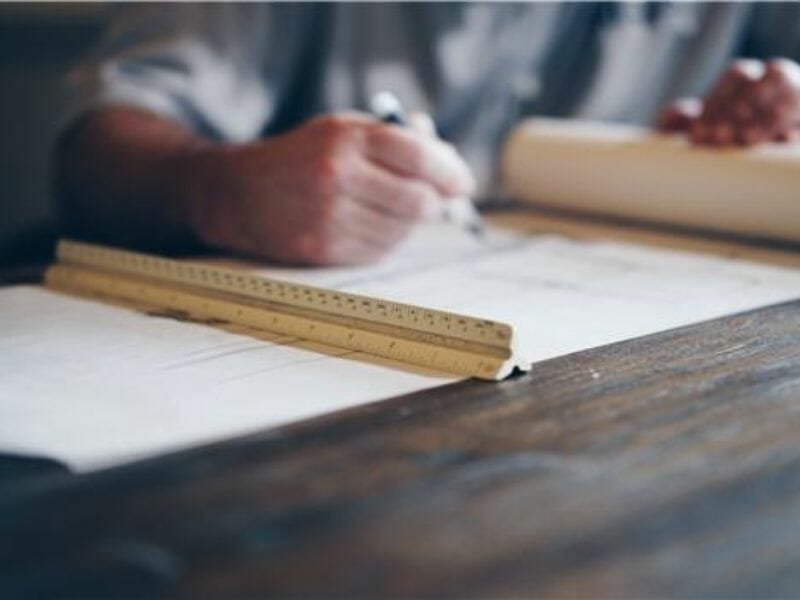
We’ll share tips on how to draw a blueprint with you in a moment, but first, let’s take a quick look at the difference between a floor plan and a blueprint.
Blueprint vs. Floor Plan– Definition
Floor Plan and Blueprint can sometimes be used interchangeably, but don’t let that fool you – the differences are quite significant. A blueprint originally referred to a copy technique, characterized by white lines on blue paper.
It didn’t have to be a floor plan per se but could be a drawing of a building, a construction drawing, or indeed a floor plan. Nowadays, a blueprint most often refers to an architect’s drawing of a floor plan, complete with lots of measurements and details.
Here at RoomSketcher, we consider a blueprint to be anything from an architect’s floor plan, to a hand-drawn sketch of a floor plan. Basically, a floor plan that you likely wouldn’t use for sales or marketing purposes (because it’s too detailed or just a rough sketch).
A floor plan, on the other hand, is a type of drawing that shows you the layout of a home or property from above. It is much more polished than a blueprint and is used for sales, marketing, and communication purposes. Examples include when you are listing a property for sale, communicating a design to an interior design client (or your spouse!), working with contractors, and much more.
To create the floor plan, you first need a blueprint. Sometimes you can get one from the architect, the home builder, or from earlier home sales. Often, however, there won’t be a pre-existing blueprint, and you need to draw the blueprint yourself, by hand.
How to Draw A Blueprint By Hand
Before you get started, make sure you have a pen and paper, plus a simple laser measure. If you don’t have a laser measure, you can still create your blueprint, it will just not be as accurate.
If you are not using a laser measure, use a standard tape measure, or as a last resort, try to “step out” distances using your feet where a long stride represents 1 meter or approximately 3 feet. With tools in place, follow the RoomSketcher 5-step process on how to draw your blueprint by hand.
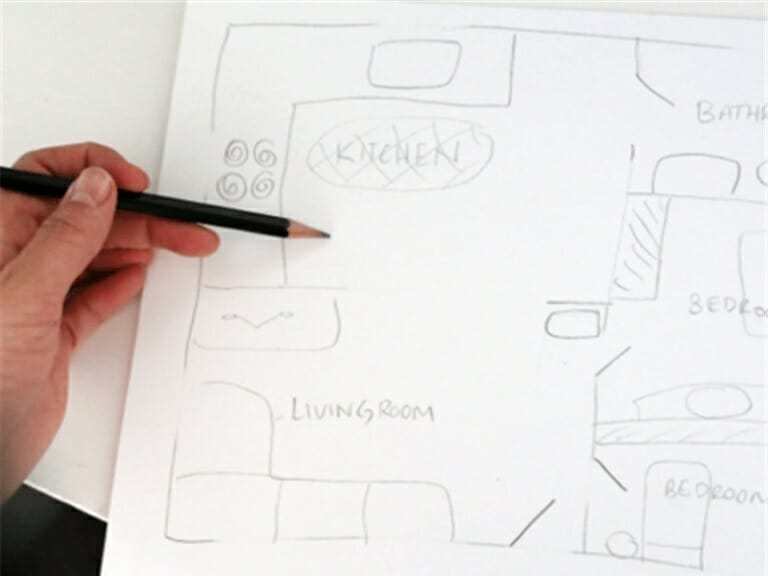
1. Start with a Walkaround of the Property
A walkaround is a great way to get to know the property before you actually start drawing. A lot of professionals already do this as part of their work. For example, if you are a real estate photographer – you might have already walked the property as you shot photos.
The idea of the walkaround is to give you an overall visualization of the shape of the property. You want to aim to represent the property’s shape on paper so you don’t get surprised half-way through your drawing.
Tips at this stage:
- If it’s a house, take a walk around the house outside and make a mental note of its shape
- If it’s an apartment, have a quick stroll through the different rooms to try to get an overall idea of the shape of the apartment
- Try to get a mental overview so that the overall shape is reflected in your blueprint
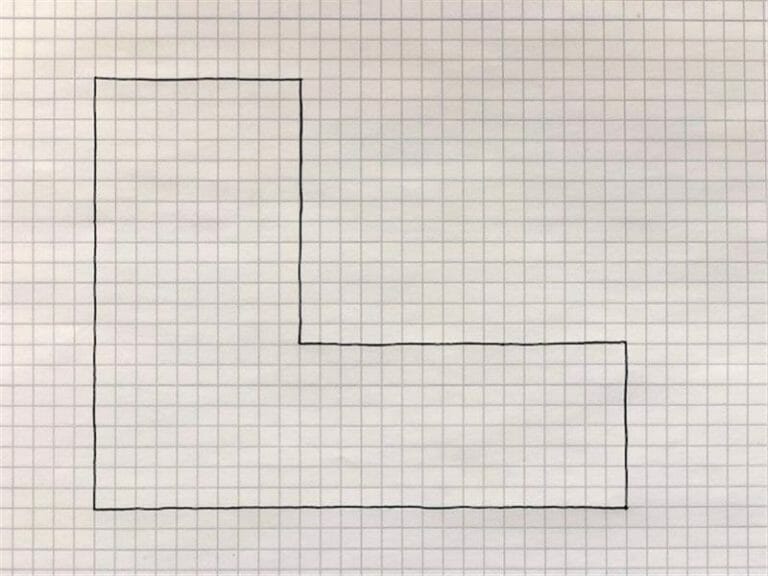
2. Go Room By Room: Draw Walls First
Start with the biggest room of the property. Enter the room and note the shape – is it a perfect rectangle or are there any corners or nooks you need to consider? Draw the room with the correct shape on your paper. Make sure to start drawing this room so that you will have space to draw the rest of this floor on the paper.
This is why the walkaround we talked about earlier is so useful as you will have a general idea of how the floor plan will pan out. Try to make the longest wall, the longest line on your paper. This is so that you end up with a blueprint that is more or less proportional.
Once your room shape is down on paper, get out your laser measure, and measure the walls. Note your wall lengths using your preferred units, either meter or feet.
Mark your wall lengths clearly on your sketch, remembering to leave a bit of space between the measurement and the wall so you can add windows, etc. at the next stage.
Tips at this stage:
- Enter room
- Determine shape
- Draw shape eg. square
- Measure and note down wall lengths
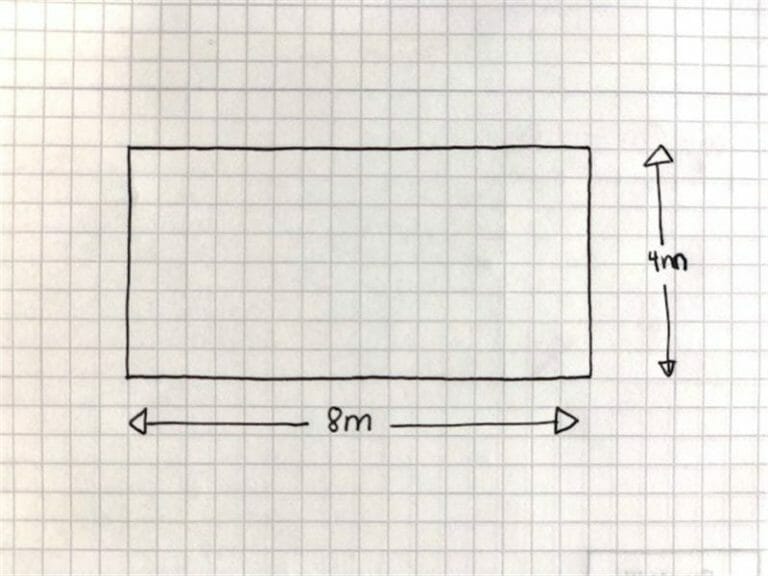
Top RoomSketcher Tip!
Use graph paper/squared paper when creating your blueprint. This makes it easier to create straight lines and to make your drawing proportional (eg. 2 squares = 1m)
3. Next: Add Doors, Windows, and Stairs
After jotting down the shape and length of the walls, it is time to add the key structural items such as windows, doors, and stairs. Use blueprint symbols to make it easy for others to read your blueprint. Try to indicate where the items are in proportion to each other, and where they are placed on the walls.
To get exact distances, use your laser measure and note down the distance the window is from a door, or the corner of the room, for example.
Tips at this stage:
- Look around the room for any key structural items (doors, windows, stairs)
- Mark doors – including opening angle
- Mark windows
- Add stairs – note direction (up or down)
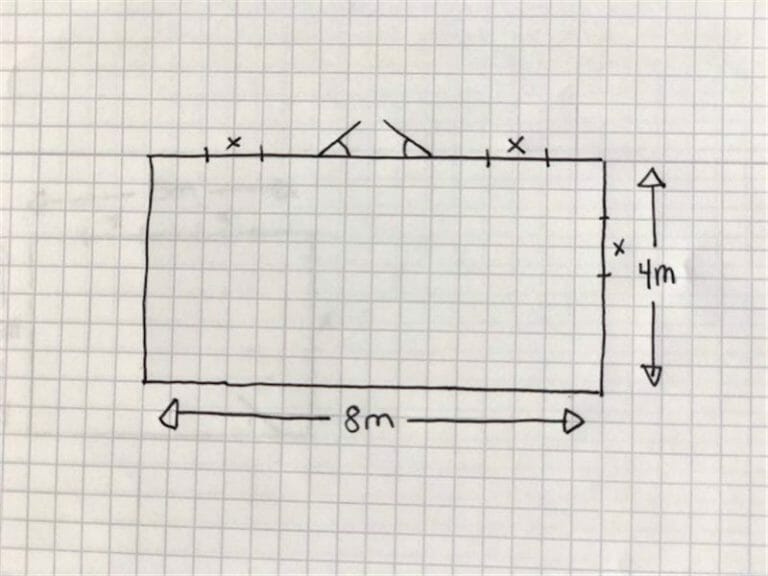
4. Add Fixed Installations
The final step when drawing a room is to add fixed installations. You will typically find these in rooms such as a bathroom, kitchen, or laundry. Include all the fixed installations that you want to be drawn on your finished floor plan. Again, we recommend using blueprint symbols to clearly show which items you are drawing.
Tips at this stage:
- Are there any fixed installations in this room?
- Kitchen – remember to include sink, fridge, oven, cooktop
- Bathroom – include WC, vanity, shower and/or bathtub
- Laundry – include washer, tumble dryer, sink, etc
- Wardrobes and/or coat hangers in walk-in closets

5. Move on to the Next Room
After you are done with the first room, you are ready to move to the next room. Think about how the next room adjoins with the room you just drew. Add in the door or opening between the two rooms, and then you are ready to repeat the process for the next room.
Start with determining the room shape, draw the walls, note the measurements, and add in the key structural items followed by the fixed installations.
Tips at this stage:
- Room shape
- Add wall measurements
- Insert key structural items like doors, windows and stairs
- Add in your fixed installations
- Move on to the next room
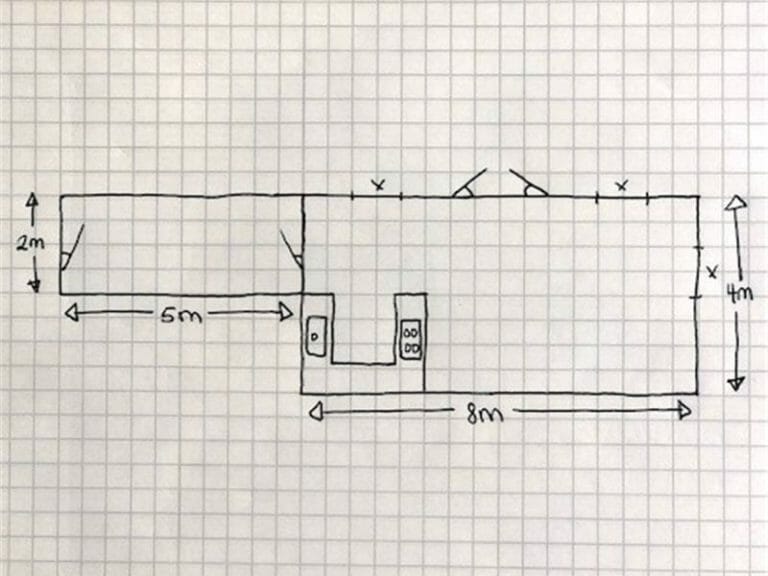
Checklist for your Hand-Drawn Blueprint
Now it is important to check that you have all of the important information on your blueprint drawing. Give it a good once-over to make sure your key details are included. Add any extra details for clarity, for example room names.
For some redraw services, corrections and modifications can be quite pricey, especially if they are requested after the finished floor plan is complete. Other services have online editing software, where you are able to update the finished floor plan yourself after it has been created.
Checklist:
- The blueprint contains at minimum 1 measurement
- Room names clearly marked
- Key structural elements and fixed installations are marked using blueprint symbols
- Drawing is ideally relatively proportional
- Use one page for each level or floor of the property
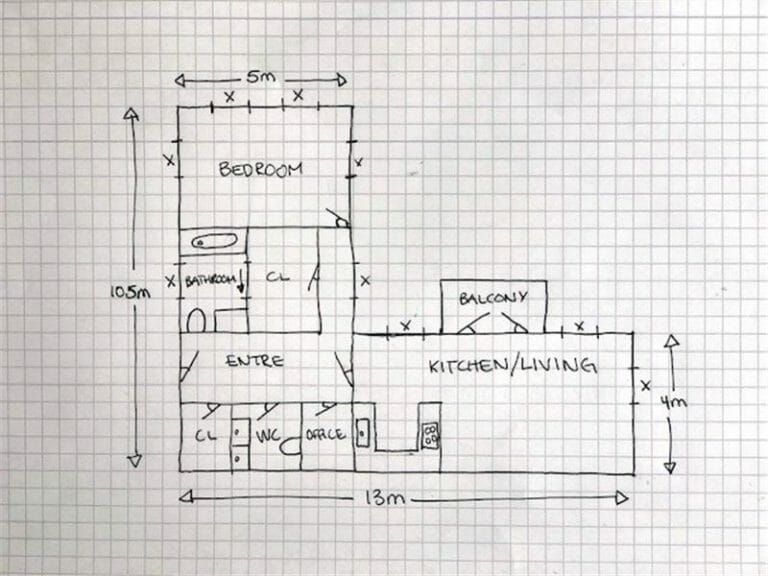
Blueprint Symbols
Use standard symbols when you draw your blueprint, to make sure the illustrator creating your finished floor plan knows what items you are looking for.
There are standard key symbols for structural items, like your doors, windows, and stairs, in addition to fixed installations, like the sink, fridge, or cooktop. In addition, if you want a fully furnished floor plan you can also opt to add symbols for beds, dining tables, sofas, and more.
Alternatively, some services will offer to furnish your floor plan, even though you haven’t added any of these furniture symbols. It all depends on what look you are going for.
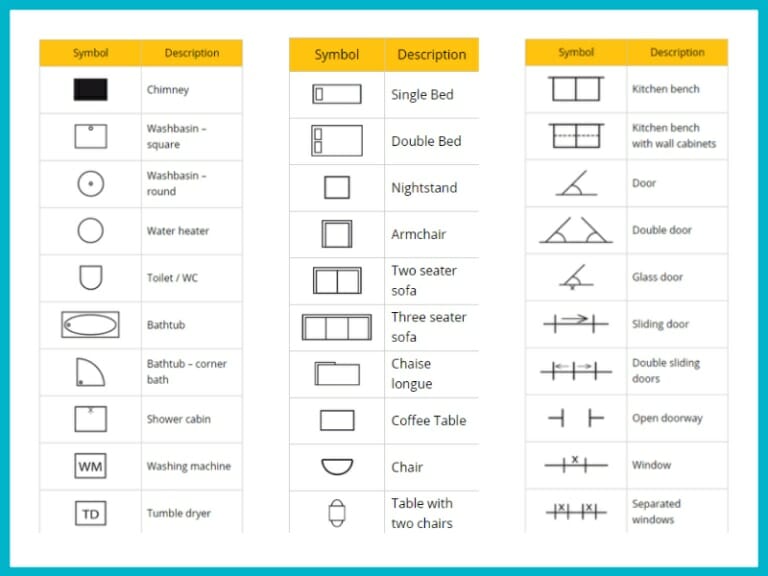
Want to learn more?
From Hand-Drawn Blueprint to 3D Floor Plan
Now it’s time to convert that hand-drawn blueprint into a professional 2D Floor Plan and a high-quality 3D Floor Plan. You’ll find lots of different floor plan services out there that will convert your sketch into a marketing-ready, polished floor plan.
We recommend choosing a provider that makes it easy to make changes yourself after you receive your finished floor plan, as it is quite likely that you will have forgotten some detail on your hand-drawn sketch.
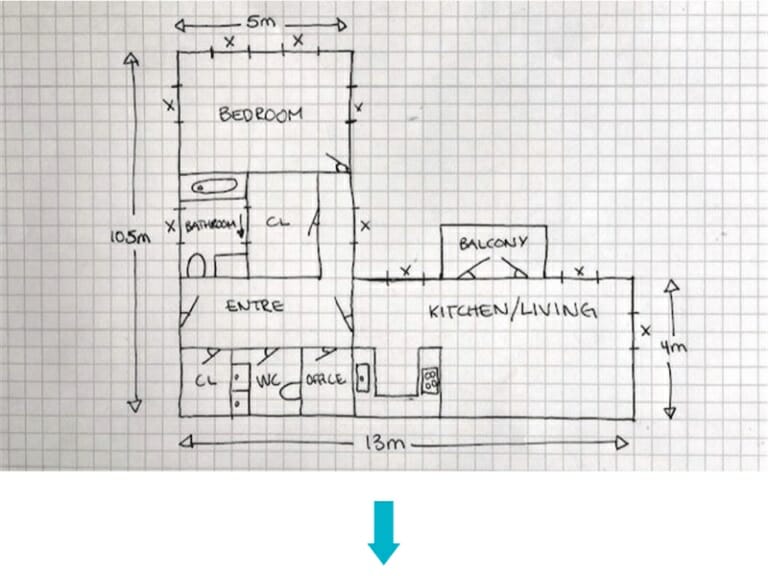
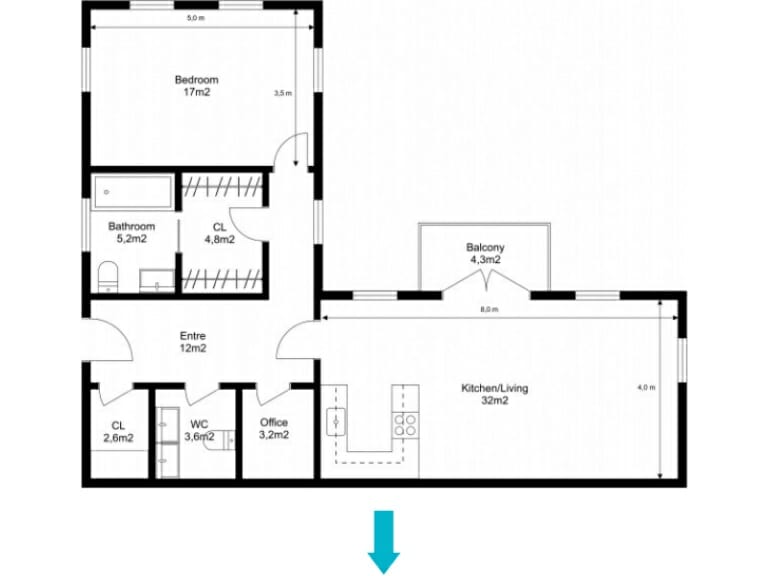
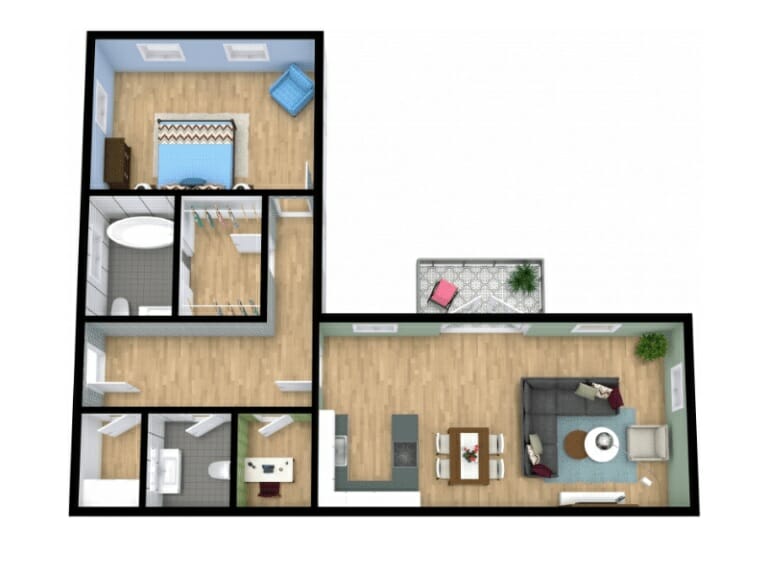
Get started today
Once your hand-drawn blueprint is finished, you have 2 options on how to turn the hand-drawn sketch into a professional floor plan.
You can either use a software like the RoomSketcher App, and then upload the blueprint so that you can trace over it. Or, you can send in the blueprint to RoomSketcher Floor Plan Services, and have expert illustrators create a finished floor plan for you.
Either way, once the finished floor plan is ready, you can actually open up the floor plan in a digital format, make any changes you want and then export the updated floor plan, ready to use.
Don't forget to share this post!
Recommended Reads
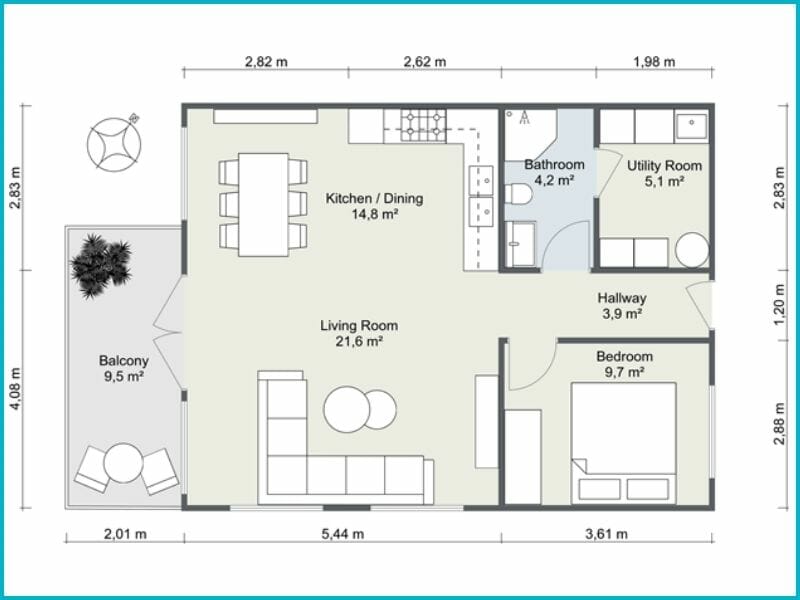
12 Examples of Floor Plans With Dimensions
This is a complete list of floor plans with dimensions, giving you lots of floor plan inspiration and examples.

How to Prepare the Home for Real Estate Photography
Are you listing a property for sale? Get our complete checklist on how to prepare your home for the real estate photography shoot.
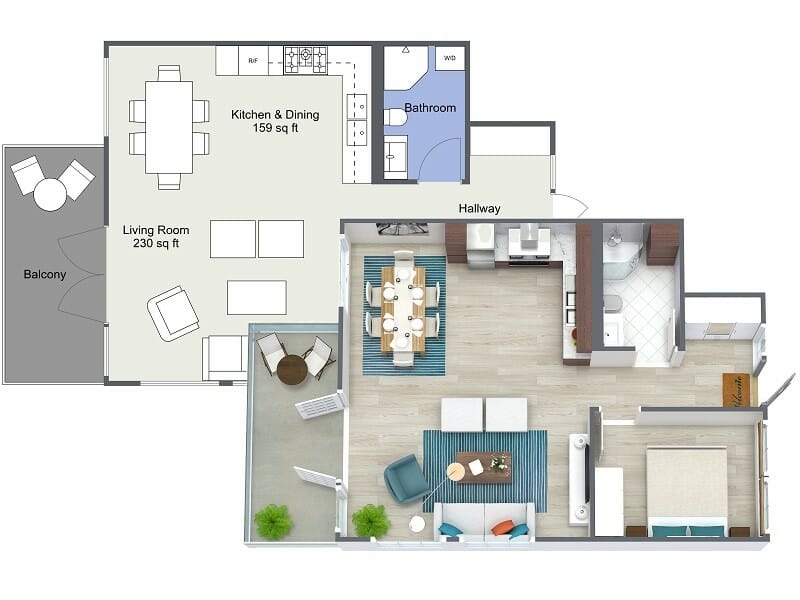
Order Floor Plans Online
Need floor plans? Order floor plans online quickly and easily with RoomSketcher Floor Plan Services. Ready the next business day!
